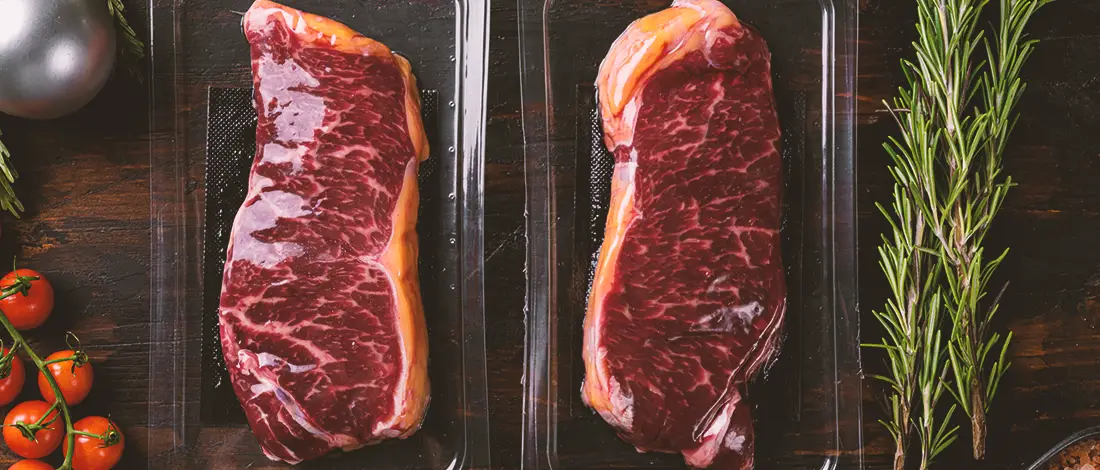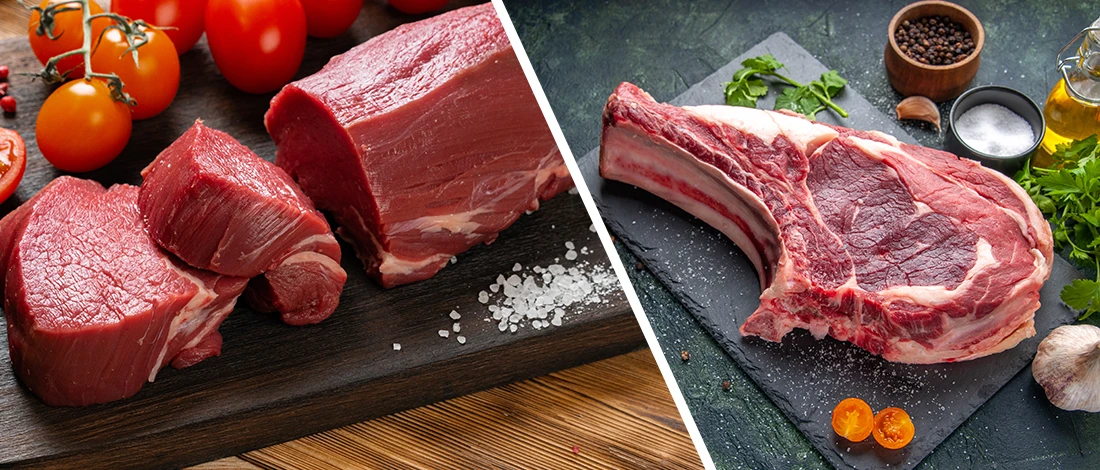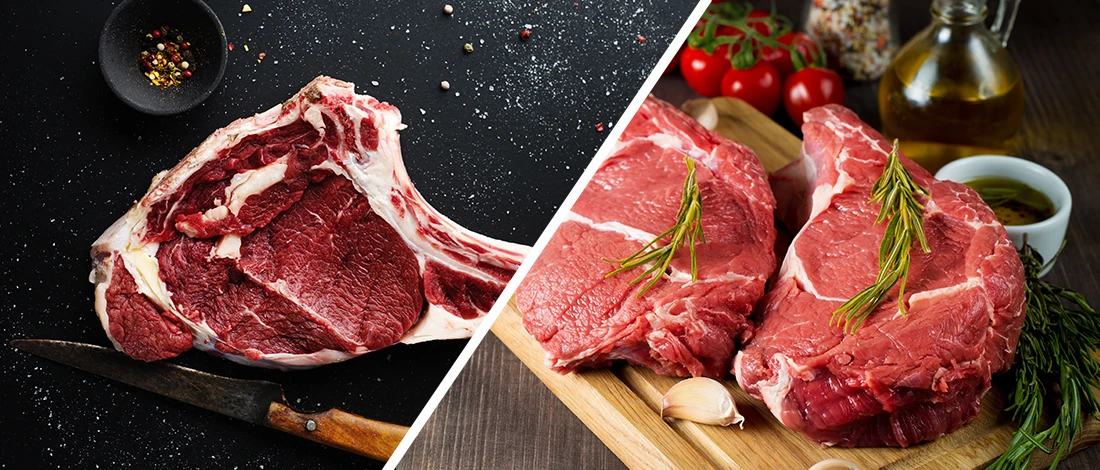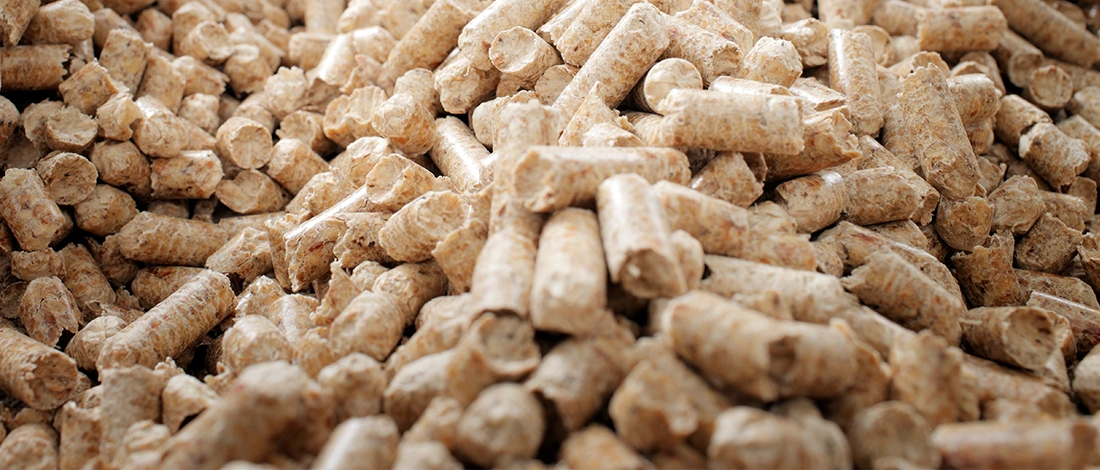As a six-year dedicated carnivore, I've bought a whole cow for special family gatherings a couple of times. Through the experience, I've picked a tip or two to get the maximum yield from your purchase while considering your fridge space at home.
Today we look at how much meat you can get from a cow and factors affecting your take-home meat poundage.
Let’s get started.
Quick Summary
- The amount of meat you get from a cow depends on factors like the cow's size, breed, and age, with the take-home poundage derived from 60% of the hanging carcass weight.
- The yield of meat from a cow is influenced by factors such as carcass fat, aging, beef carcass muscling, and the cutting method used during processing.
- Maximizing yield when buying a whole cow involves understanding the cow's size, hanging weight, and whether it's grain or grass-fed, as well as knowing the different cuts and the cow's age.
How Much Beef Do You Get from a Cow?

It's essential to do your due diligence before deciding to buy a whole cow. And if you don't want to go through that trouble, I recommend you go to ButcherBox and order fresh, good-quality cow meat right away.
You get 440 pounds from a cow, with one half (220 pounds) being ground beef and the other half steak cuts like brisket and tenderloin.
The first step to knowing the quantity of meat you may get from a matured cow is to understand the difference between live, carcass, and packaged weights [1].
- Live animal weight (LW): This is the total live weight of an entire cow before being slaughtered.
- Hot carcass weight (HCW): When a beef cow is butchered, specific animal parts are extracted, including the head, hide, feet, blood, and viscera (internal organs). The hot carcass weight comprises the residual lean (meat), fat (adipose), and bone.
- Chilled carcass weight (CCW): This is the carcass's weight after being chilled for at least 24 hours. During the chilling process, the carcass loses 3-5% of its moisture, resulting in weight shrinkage.
- Packaged weight: This is the take-home weight of the cow and includes the actual cuts packaged for you. It is usually 60-65% of the hanging weight and includes steaks and bones.
Once you know all these, you can calculate the dressing percentage to determine how much the carcass will yield from the living animal.
The dressing percentage is derived from the formula:
Hot carcass weight (HCW) ÷ live weight (LW)× 100
The general rule is that the average dressing percentage should be around 60-64% [2]. For example, a 1,300-pound cow with a hanging weight of 800 pounds would have a 62% dressing percentage.
"If you have a cow with a higher dressing percent, this means a higher percentage of the total weight, and you get extra value for your money."
- Amy Radunz, Animal Scientist
It is critical to remember that these figures will fluctuate depending on different factors such as:
- Animal size
- Animal type (bull or steer)
- Breed
- Weight of the head, hide, horns
- Size of gut fill
Different Cuts from a Cow

When a cow is slaughtered, it's separated into two cuts:
- Primal cuts
- Ground beef
The initial cuts done on a complete carcass are to separate it into primal cuts like sirloin steaks and round roasts. Each primal cut will be further processed into bone-in or boneless cuts like strip steaks.
For example, the loin can be divided into bone-in rib, T-bone, porterhouse, and sirloin steaks, whereas the rib and chuck can be divided into bone-in or boneless chuck, stew meat, and ribeye steaks.
Because of their muscular structure and lack of suppleness, ground beef is made from trimmings of several larger/tougher edible meat cuts, particularly chuck and round.
Ground beef is then made into specialty meats like summer sausages and patties.
Related Articles:
Factors Affecting Cow Meat Yield

The following factors influence how much meat you get from a whole cow:
1. Carcass Fat
External carcass fat, often known as back fat, has the most considerable influence on the percentage of retail meat products from a carcass [3].
A fattier carcass means more fat trim, and as more fat is removed from the carcass, the final retail cuts will weigh less.
2. Aging
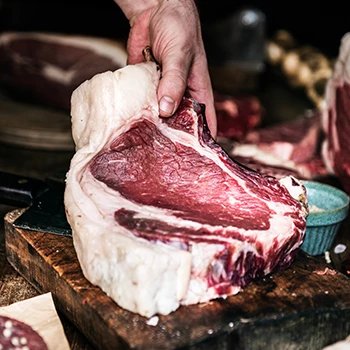
While aging improves tenderness and taste in whole beef, extended age durations result in a higher loss of moisture from the beef carcasses.
Furthermore, prolonged dry-aging causes excessive dehydration of the carcass's surface, which might produce dry, leathery regions that must be cut away.
Generally, the more aged the carcass, the less weight of retail cuts you get.
3. Beef Carcass Muscling
Greater beef carcass muscling can boost carcass output.
Dairy-type animals with reduced lean-to-bone ratios often produce less yield than beef-type livestock.
4. Cutting Method
The cutting orientations also affect the amount of product extracted from a carcass. The weight of retail cuts is less if bones are removed during carcass fabrication. Additionally, the process of trimming fat reduces yield weight.
Tips to Determine How Much Meat You'll Get?
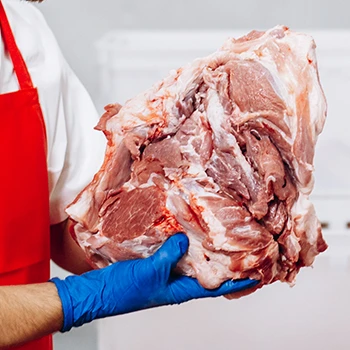
It is critical to recognize that half a cow does not produce exact pounds of frozen meat as the cow's weight.
The removal of fat, bone, skin, and organs decreases beef's ultimate pound carcass weight when it is processed.
Here are three tips to determine how much meat to expect from a beef animal.
1. Cow Size
It's easy to get caught up in the age of the steer, but it all boils down to size when it's time to butcher.
When buying a cow, ensure a minimum weight of 850 pounds and an age of 1-2.5 years. In my experience, the more the weight, the more the retail cuts yield.
2. Hanging Weight
This is the cow's weight after slaughtering, removing all the insides, and draining the blood. Because this is the pound carcass weight correlating to your take-home pounds, aim for at least 60% of the live weight of the cow to get more meat yield.
3. Grain Fed vs. Grass Fed
Inquire if the cow is grain or grass-fed. A grass-fed cow is generally leaner than a grain-fed one. Grain-fed, in turn, offers more yield, and the meat has a more marbling degree. I recommend you get a grain-fed cow that's hormone and antibiotics-free.
How To Maximize Your Yield?
Here are six great pointers to help you maximize your yield if you're buying whole cow meat.
1. Request For Yield Data

If you buy half of a cow from a farm owner, inquire about yield data. Yield data is the information that can paint a picture of how much you would get from the half-beef cow.
If you are a livestock farmer processing the cow on your ranch, request as much yield data as your processor can provide.
Once you have the data, try to analyze it as much as possible because, with this, you can pinpoint areas in your cow/herd where you can get more yield.
For example, buying a traditional heritage breed can look into the muscle structure to ensure proper fat distribution.
2. Take As Much As You Can
As a buyer, you are free to take whatever the beef checkoff regulation allows you to take, per USDA resale regulations.
Taking all organ meats such as liver, heart, and tongue can maximize the meat poundage you take home.
You can also ask for kidney fat which you can later use to make some homemade lard.
Another great tip is carrying all the different types of offal like:
- Sweetbreads
- Spinal marrow
- Trotters (feet)
- Mesentery
If you cook these properly with the right spices, they're a delectable addition to your stew meat.
3. Package Cuts Separately
Even if you love boneless sirloin tip or flank steak, you can ask to have your bones saved in separate packages so that you can use them to make soup bones or stock. This is a great tip to maximize your yield.
I love leaner meats, but to increase the total pounds of beef I take home, I request extra fattier ground beef that's then packaged separately.
4. Know Your Cuts
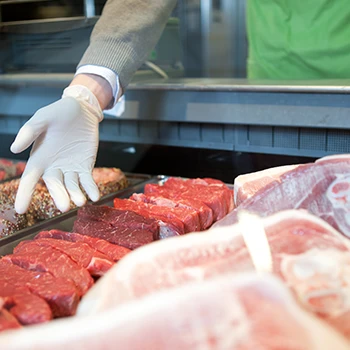
When you purchase a quarter cow, you buy either a whole forequarter or a hindquarter from one of the half sides. Note that the hindquarter is more weighty and flavorful than the forequarter.
You'll get cuts from the rib (short ribs), chuck (chuck roasts), plate (skirt steak), and brisket when you buy a forequarter. And when you buy a hindquarter, you'll get retail chops from the round roast, loin (strip steak), and flank.
Here are the characteristics and ideal cooking methods for some of the cuts as described by Eric Sornoso, CEO of Mealfan:
- Short ribs are well-marbled, rich, and flavorful, requiring slow cooking for tenderness.
- Skirt steaks have an intense beefy flavor and a pronounced grain, making them ideal for grilling or searing.
- Strip steaks are renowned for their fine marbling, tenderness, and robust flavor.
- Ground beef, made from various cuts, is versatile and can be used in various dishes.
Knowing your cuts helps you understand what part you're paying for. You get an extra amount of meat when you buy a hindquarter than when you buy a forequarter.
5. Know the Cow's Age
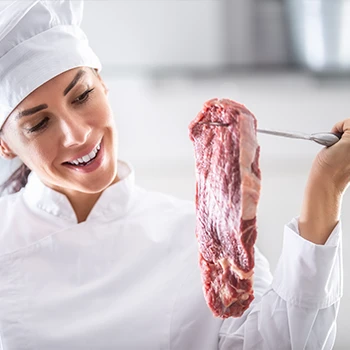
In my experience with buying different beef-type animals, the animal's age determines how many pounds of meat you get. There is an ideal age to slaughter a steer.
Once a steer or cow reaches a certain age, most of what they eat may not be converted into marbling but is instead layered as outer body fat.
And unless you keep all of the fat during carcass fabrication, you may be paying more money for the fat you'll discard.
6. Take Less Trimmed Meat
Closely trimmed, lean (90:10 fat ratio), and boneless steaks will result in even fewer pounds of take-home goods.
Based on freezer space needed and eating habits, this may be useful. But if you want to maximize your cow yield, I'd recommend going for less trimmed, bone-in cuts.
FAQs
What's the Average Hanging Weight For Half-Cow?
The average hanging weight for half a cow is 330 pounds.
How Much Meat Do I Get From 1000 lbs Steer?
You get roughly 650 pounds of meat from a 1000 lbs steer.
References:
- https://extension.psu.edu/understanding-beef-carcass-yields-and-losses-during-processing#
- https://livestock.extension.wisc.edu/articles/how-much-meat-should-a-beef-animal-yield/
- https://www.sciencedirect.com/science/article/pii/S175173112100272X


